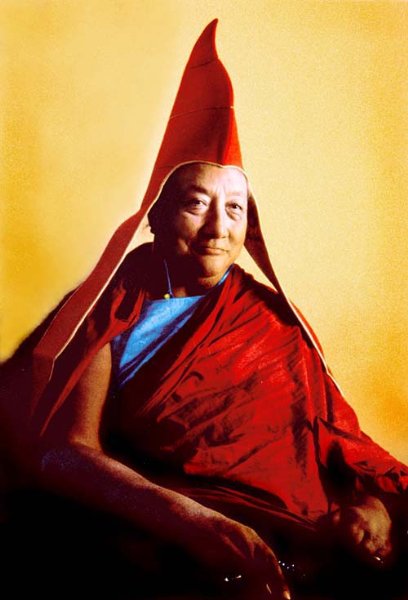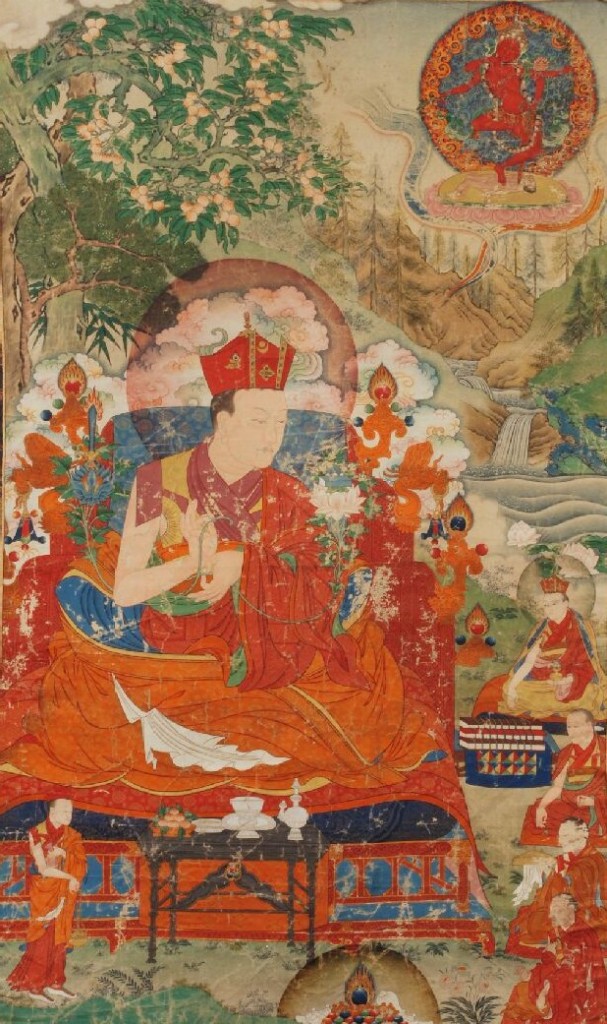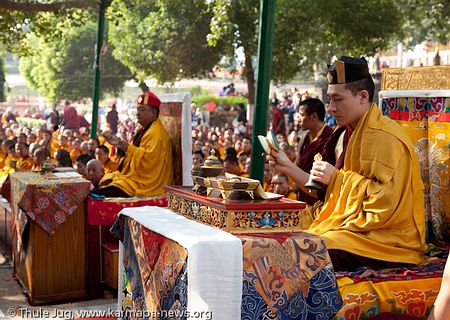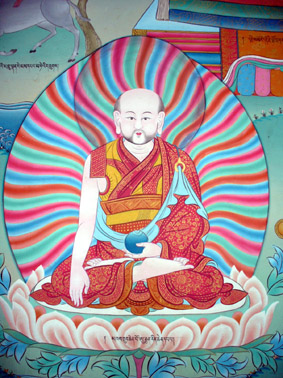This series of four wonderful black and white pictures of H.H. 16th Karmapa was taken in the 1970’s by the photographer Cynthia MacAdams and forms part of an exhibition entitled “20th Century Cultural Icons”. They show the 16th Karmapa holding dorje and bell wearing the long-tailed red “pandit hat” while giving an initiation (click to enlarge the images).
Photos of H.H. 16th Karmapa giving an inititation in the 1970s
February 11th, 2011Dilgo Khyentse Rinpoche on Guru Yoga
February 8th, 2011“Of all practices, the one which, through its blessings, will fulfil our aims and aspirations most rapidly is Guru Yoga (or Lamé Naljor in Tibetan). Guru Yoga literally means “union with the nature of the guru” and is both the quintessence and the ground of all the preliminary and main practices. It is the ultimate teaching, yet one which can be accomplished equally by anyone, whatever their capacity – superior, medium, or ordinary. For dispelling obstacles, making progress in our practice, and receiving blessings, there is no better practice than Guru Yoga.
– Dilgo Khyentse Rinpoche, in “Guru Yoga” (1999, Snow Lion)
16th Karmapa in Tsurphu
February 3rd, 2011These pictures show the 16th Karmapa Rangjung Rigpe Dorje (1924-1981) wearing the black hat, seated on chair in a room in his summer palace at Tsurphu Monastery, probably in 1946. The photographer was Hugh Richardson, head of the last British and first Indian missions to Tibet. The photos are from the collection of the Pitt Rivers Museum, Oxford University .
The Karmapa – Shamarpa Lineage
January 31st, 2011The lineage of the Karmapas was prophesied by Shakyamuni Buddha who said that approximately 1600 years after his death an emanation of Avalokiteshvara (aka Chenrezig) the Bodhisattva of Compassion would be born. Karmapa literally means ‘one who manifests buddha activity’ and his activity is to preserve and spread the essence of the teachings of all the Buddhas. The Buddha predicted the Karmapa would propagate the teachings during the course of many successive incarnations. As well, the Buddha predicted, “In the future, a great bodhisattva with a ruby red crown will come to the suffering of the multitude, leading them out of their cyclic bewilderment and misery.” In the Karmapas and the Shamarpas, the Buddha’s predictions were fulfilled.
Urgyenpa on non-conceptuality
January 27th, 2011“You need not make efforts to create non-conceptuality. You need not regard thoughts as a fault. And so that your practice does not succumb to famine, from the beginning have a bountiful crop. Not searching for a state that is calmly resting, vividly clear, and filled with bliss, bring into your experience whatever arises without taking it up or discarding it.”
– Drubtop Urgyenpa (1230-1312), Karma Kagyu lineage holder (between the 2nd and 3rd Karmapas)
Pim van Lommel on Consciousness Beyond Life
January 24th, 2011Renowned cardiologist Pim van Lommel, author of Consciousness Beyond Life: The Science of the Near-Death Experience , discusses his research into the near-death experience. In this extensive interview, he describes the brain as a “transceiver” which receives information from consciousness, states that everything originates from consciousness – which he describes as “fundamental” and “non-local” – and discusses the profound implications of his research for Western science.
Dewachen Wishes
January 19th, 2011
Dewachen Wishes – wishes to be reborn in Dewachen – the pure land of Amitabha, the Buddha of Limitless Light






